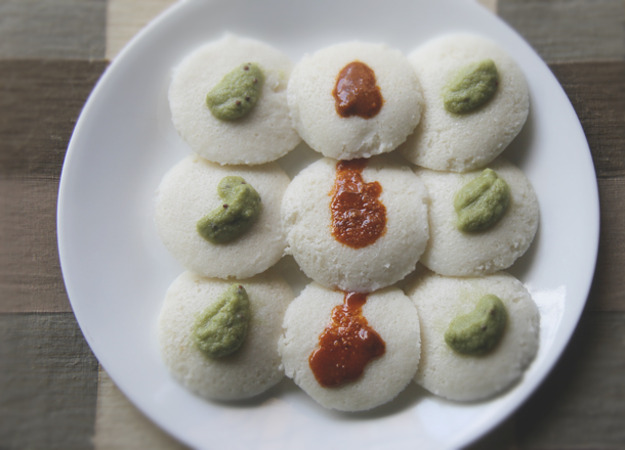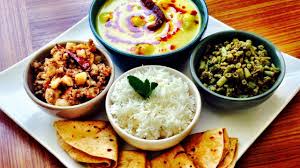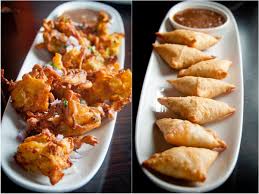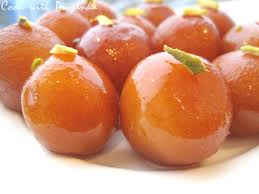The mouthwatering Indian foods are a concoction of sweet, sour, spicy and hot flavors. Savored best with a toasty naan or rice, the curries, tandoori and dal are too tempting and hard to resist. However, many Indian foods contain a lot of carbohydrates, and you have to be careful with these food items if you are watching your carbs intake.
Carbohydrates-Rich Indian Foods
1. Rice and Bread

Rice is an essential part of Indian cuisine and is served with many dishes. The usual varieties are plain rice flavored with cumin, onions and coriander, or pilaf which is flavored with lime, tomatoes and other exotic spices. The rice used is usually basmati rice. Half cup of basmati rice has 24 grams of carbohydrates in it.
The breads accompanying the curries or other dishes are prepared with wheat flour which can be whole wheat or refined. There are many types of bread: some are flat and baked in clay ovens, while others can be pan fried or deep fried. The main types are naan, roti, phulka, puri or paratha. A standard serving of naan contains 77 grams of carbohydrates.
2. Indian Vegetarian Cuisine

Most dishes on an Indian menu are based on vegetables. There are many options made with lentils, beans or chickpeas, and they are also carbohydrates-rich Indian foods. Half cup of cooked chickpeas has 22 grams carbohydrates while the same quantity of lentils has 8 grams of carbohydrates. Most of the carbohydrate rich Indian foods are beans or vegetables based.
Dal is made with stewed lentils, garlic, onions and chilli; channa masala is made with chickpeas; and saag is steamed spinach in curry sauce. The vegetables mostly used in these dishes are high in carbohydrates.
3. Indian Starters

Samosas and pakoras are the most popular Indian starters. Be careful when you order them as these are also two of the most carbohydrate-rich Indian food delicacies. Samosas are deep fried little triangular parcels of pastry filled with different stuffing. The pastry is rich in carbs. Pakoras or bhajis are made with various vegetables covered in a batter made with chickpea flour and then fried. These have a lot of carbohydrates.
Another popular starter are papadums. These rice or lentil crackers are relatively low in carbs but the dips served with these are made from tamarind, dates, sugar or mango and have a lot of carbohydrates.
4. Indian Desserts and Drinks

The desserts and drinks served at Indian eateries are also carbohydrates-rich Indian foods. For example, gulab jamun is made with flour based dough which is deep fried and soaked in sugar syrup. Kheer or rice pudding is made with rice, milk and sugar. This cardamom scented dessert is full of carbohydrates. Mango lassi is a smoothie made with mango, yogurt and milk. One cup of it contains 22 grams of carbohydrates.
Other drinks are no exception and are mostly laced with extra sugar, making the carbs content even higher.
How to Eat Carb-Rich Indian Diet in a Healthier Way
There are certain ways you can enjoy these Indian foods in a healthy way. Make smart choices and opt for healthy carbs. To achieve this, you have to know that there are two forms of carbohydrates: simple carbohydrates and complex carbohydrates.
- Simple carbohydrates are not healthy. Refined sugars and products made from them are referred to as simple carbohydrates. These do not contain fiber or vitamins and should be taken in limited quantities. Simple carbohydrates are simple to be broken down and get absorbed very quickly, leading to abrupt rise in blood glucose levels. Consuming lots of simple carbs increases the risk of developing diabetes, heart diseases, obesity and other complications. Most of the desserts, jams, jellies and sweets have a very high content of simple carbs. White rice and refined flour also contain a lot of simple carbohydrates.
- Complex carbohydrates have a more complex structure and the body takes longer to digest them. They do not lead to an abrupt rise in blood glucose level. Due to slow and gradual digestion, they are good for diabetics and do not lead to obesity. Complex carbohydrates are also rich in vitamins and minerals, and contain high amounts of fiber. Complex carbohydrates are much healthier than the simple carbs. Whole grain flour and cereals have complex carbs. Vegetables such as zucchini, spinach, okra and peas also contain complex carbohydrates. Oats, barley, bajra, brown rice, beans, lentils, legumes and whole wheat breads contain complex carbohydrates and are healthy options.
Now you know that there are so many carbohydrates-rich Indian foods. If you are after a healthy option, skip the simple carbs and opt for a dish which contains more complex carbohydrates. Here are some tips for you.
- Instead of consuming a side dish of bread made from refined flour, opt for a whole grain option. You can order a roti made from bajra or oat flour as well. If you are making a side dish by yourself, add some barley or sorghum flour to the regular flour.
- For additional fiber and added health benefits, add chia or flaxseeds to salads or smoothies. You can also add the powder of these to the chappati dough.
- Use brown rice to make pilaf (pulao) or khichdi.
- Instead of using potatoes and other starchy vegetables, use green leafy vegetables. You can try different combinations.
- Add different types of beans and bean sprouts for additional vitamins and fiber content to your salads and soups.
- Instead of using ketchup or chutneys, try homemade hummus. To make hummus, you can put some cooked chickpeas in a food processor, and then add some olive oil and tahina paste. Add salt, garlic and lemon juice for flavor.
- Have at least two servings of fruit and four servings of vegetables every day.
